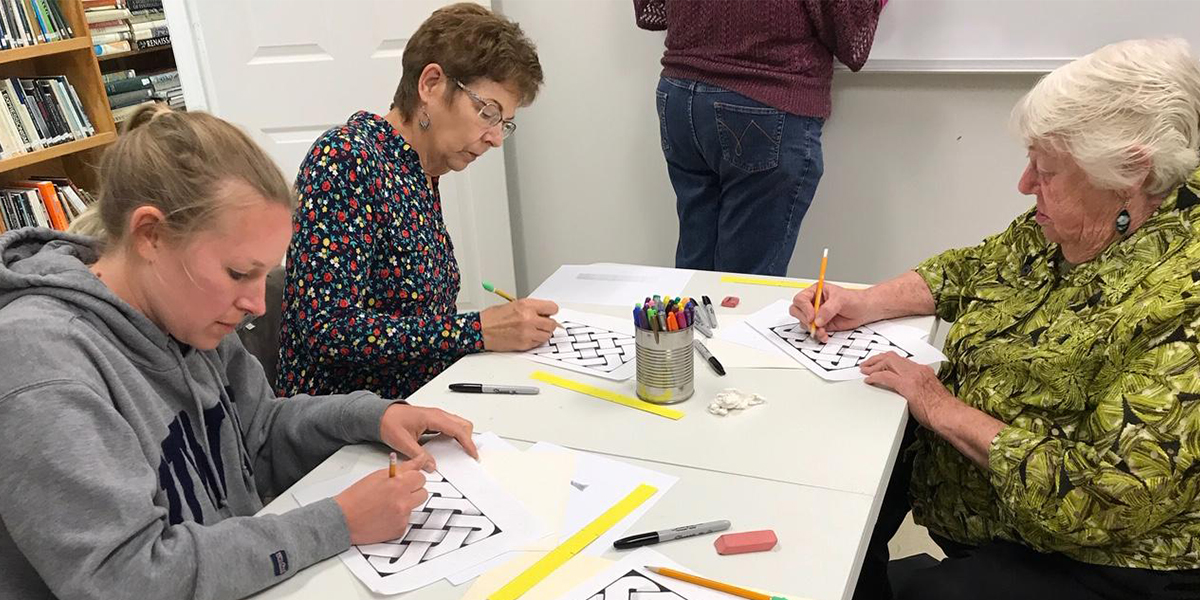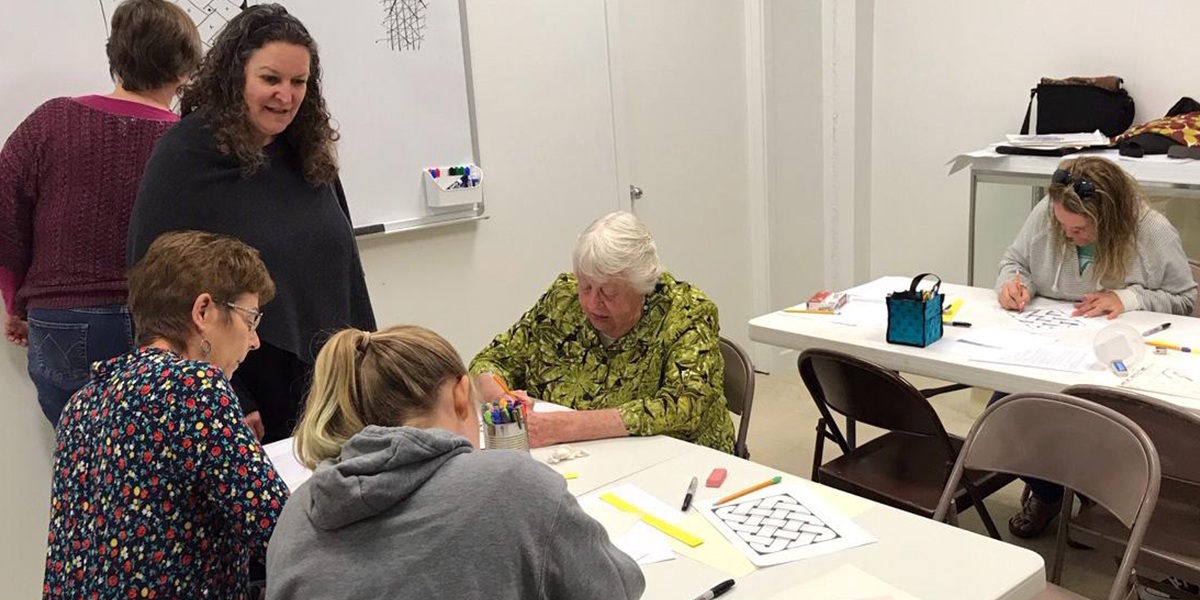


Two University of Wisconsin-Platteville psychology students and one faculty member recently conducted research for Rountree Gallery in Platteville that showed the value of art experiences.
Student researchers Shannon Smith, a senior psychology major from Kenosha, Wisconsin, and Amanda Richey, a senior psychology major from Frederic, Wisconsin, are enrolled in Behavioral Research II, taught by Dr. Joan Riedle, professor of psychology at UW-Platteville.
In September, Nancy Collins, president of Friends of Our Gallery, a nonprofit organization which oversees the Rountree Gallery, approached Riedle and the university’s Department of Psychology with a request to conduct research on the value of art experiences, in hopes of furthering its mission of sharing art creation, appreciation and education. The gallery, located at 120 West Main Street, is funded through donations and sales and is run exclusively by volunteers.
Smith and Richey, guided by Riedle, responded to Collins’ request, authoring a research proposal exploring the impact of art experiences on mood and arousal. In November, they submitted the proposal, which included manipulations of cognitive set and inclusion of music, to Friends of Our Gallery. The proposal was accepted that month.
During the spring semester, Smith and Richey collected data from 69 UW-Platteville students enrolled in introductory psychology and art courses. Prior to engaging in an art activity designed and led by Smith and Richey, participants responded to a prompt asking about a happy experience which they could incorporate into their art (positive prompt) or simply asking about their art background (neutral prompt). Small groups then completed the art task either with or without classical music.
Through their research, Smith and Richey successfully demonstrated that art participation resulted in a slight increase in arousal (feeling more energetic) and a significant increase in positive mood. “Those desirable changes were equally evident with both cognitive sets and regardless of the presence of music,” noted Riedle. “Thus, art experience resulted in desirable effects, but the students’ added manipulations were not effective.”
The two student researchers also collected data at a Rountree Gallery class on drawing Celtic knots, taught by Carole Spelic' on April 28. While only four of the attendees were eligible to be participants given timing issues and age restrictions, three of four participants showed increases in energy and all four showed increases in positive mood.
On the assessment they employed, the Affect Grid, the combination of pleasant mood with an energetic state is considered most desirable. “None of the four participants were in that state at the beginning of the drawing class, but all four were at the end,” said Riedle. “Thus, while based on a very small sample, the results at Rountree Gallery confirm those at UW-Platteville. Art experience can be beneficial."
“I’m delighted that my students conducted an applied research project,” added Riedle. “Theory is great, but applied research has far more relevance to the work that they’ll be doing in their future careers.”
“I found that research projects are much more interesting and fun than I had anticipated when first signing up for the Behavioral Research courses,” said Smith. “The prior research on previous studies, formulating a new experiment, running said experiment and seeing how people respond to scientific manipulation is almost exciting. I look forward to working on projects such as this in the future.”
“Conducting this research experiment has shown me the benefits of artistic expression,” said Richey. “The results have expanded my interest in art and other forms of creative expression as a way to cope with stress.”
“The research UW-Platteville students and faculty conducted helped identify the mood and mental state of people before and after creating something,” said Collins. “These results confirmed our instincts to offer structured classes as well as unstructured open studio time specifically designed to reduce stress and enhance creativity and well-being.”